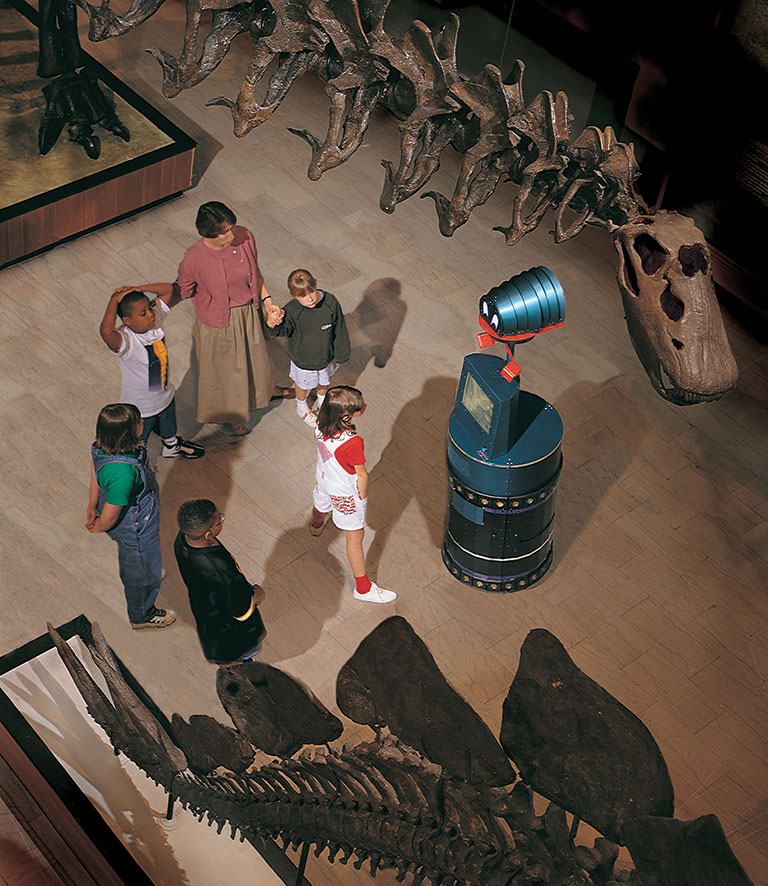
Students with Chips, stationed beneath the museum’s most famous dinosaur, in 1998.
In May 1998, the country’s first robotic tour guide debuted in Carnegie Museum of Natural History’s Dinosaur Hall. While robots had walked inside active volcanoes and bumped against rocks on Mars, none had yet done the risky work of dodging a museum full of kids. “People, as it turns out, are really hard to avoid,” Illah Nourbakhsh, professor of robotics and director of the CREATE Lab at Carnegie Mellon University, said at the time. But Chips, a 400-pound robot-turned-museum-docent, was prepared when curious kids and their grown-ups flocked to it. It safely moved to predetermined locations among the fossil giants, stopping if an excited museumgoer got in its path, and delivered 15-minute prerecorded fast facts about lesser-known but just as fascinating features of the hall such as its aquatic dinosaurs. Resembling an upright steel drum on wheels, Chips wasn’t flashy, but its tummy doubled as a video screen and it took daily lunch breaks, the first robot to plug itself into the wall and “eat” electricity.
A project of the museum, Carnegie Mellon University’s Robotics Institute, and Redzone Robotics, Inc., Chips, which was in use at the museum until 2002, created so much interest that a new company, Mobot, was created. Now Chips and three other prototype mobile robots known as MoBots are among the latest additions to Carnegie Science Center’s roboworld® exhibition, thanks to The Henry Hillman Jr. Foundation. Chips is joined by its one-time museum sidekick, Sweet Lips, which was named for a fish found in the Indo-Pacific Ocean and conducted tours in the museum’s Hall of North American Wildlife. n
Receive more stories in your email
Sign upTags:
Science & Nature